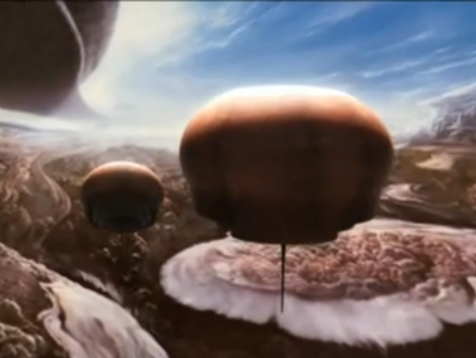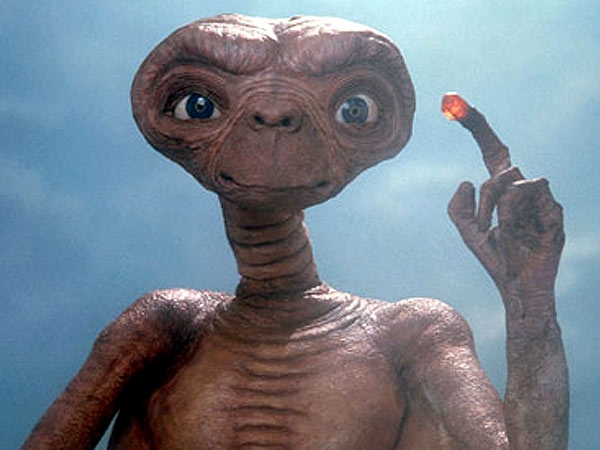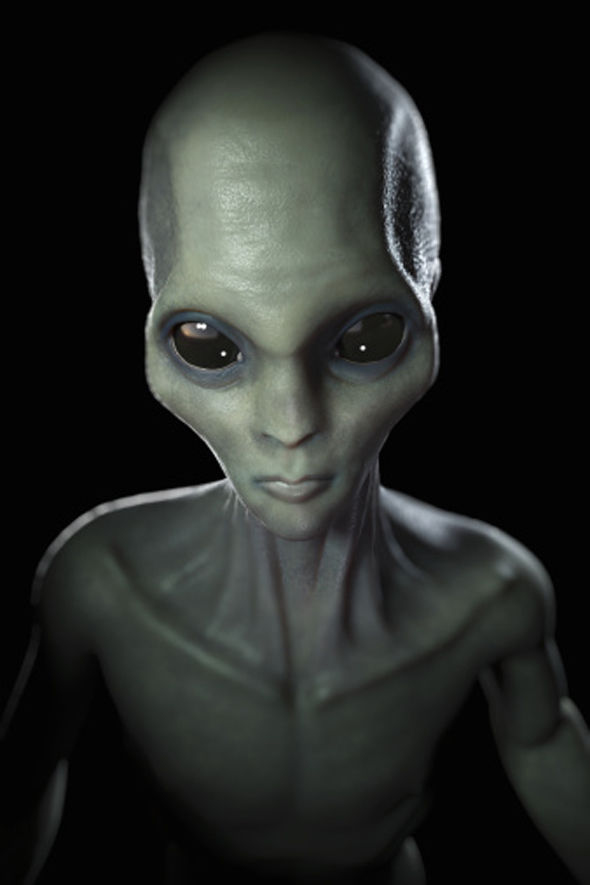A great herd of creatures kilometers wide hovers lazily through the perilous sky of a faraway world.
They are bigger than any whale we have ever seen and fly like no bird we have ever identified. They traverse skies that are far different from that of Earth.
Our atmosphere is made of mainly nitrogen and oxygen, while theirs is constructed of hydrogen, helium, methane, ammonia and water. We cannot breathe the air they breathe, let alone thrive among these gentle giants.
Their planet has no solid surface on which to stand. If we are to set foot there, we would sink into smothering smog of hydrogen and helium until we perish in the scorching temperature.
This place seems horrendous. A treacherous planet to live in. Some would think, “how can there be living creatures at all in this hostile land?”
The inhabitants that reside there are well-adapted to their environment as much as we are perfectly suited to live on earth.
To survive in such a strange realm, the native species must match the level of strangeness, too. Therefore, don’t expect them to look remotely like us. More than anything, they resemble a hoarde of living, breathing hot air balloons!
By heating their hollow interiors, heavier gases such as helium are pumped out of their bodies, leaving only gas with the least mass, hydrogen. This results a buoyancy effect that lets them float around to escape the deadly surface of the planet and go about their floaty business.

The gift of flight lets them soar and eat organic molecules littered all over the skies. However, they can create food by processing air and sunlight just as well should sustenance become scarce.
Intricate pattern of color is etched onto their skin. If the Floaters don camouflages, that can only mean one thing. They are trying to appear invisible to someone.
Like the unforgiving plains of the Serengeti or the volatile jungle of the Amazon, natural selection prevails in this hydrogen-rich wilderness. Floaters are the staple food of the fast and agile killers simply called ‘Hunters’.

An alien world indeed.
Too strange
Told above is a ‘well-seasoned’ picture of Jupiter. A planet so huge that it could fit 1,300 Earths inside it.
Jupiter is as far as 588 million kilometers away from where we live. It is one of 100 billion planets in the Milky Way galaxy that houses our home - the pale blue dot.

However real planet Jupiter is, the indigenous inhabitants vividly mentioned, the Floaters and Hunters, are creatures of human fantasy.
Nonetheless, Floaters and Hunters are not mere fantasy per se. They are sophisticated speculation that is brought to life by imagination and art.
Astronomer Carl Sagan and Astrophysicist E.E. Salpeter dreamt these creatures through calculations adhering to the laws of physics and chemistry; the same set of rules that apply throughout the universe.
“Some people – science fiction writers and artists, for instance – have speculated on what other beings might be like. I am skeptical about most of those extraterrestrial visions. They seem to me to rely too much on forms of life we already know,” says Sagan as quoted from his seminal work Cosmos.
This is Sagan’s critique on the anthropomorphic aliens, or aliens with human appearance, that are made famous by Hollywood filmmakers and contemporary artists.
Strangely enough, we are used to these kinds of familiar images.


To this habit Sagan addresses, “I do not think life anywhere else would look very much like a reptile, or an insect or a human – even with such minor cosmetic adjustments as green skin, pointy ears and antennae. But if you pressed me, I could try to imagine something rather different.”
Sagan and colleague challenged the popular convention and offered an extremely different vision of a whole new ecology never before seen. All this by taking into account scientific facts and playing around with it.
After all, aren’t aliens supposed to look alien to us?
The lonely species
Our fascination with familiar aliens – a funny contradiction – is deeply rooted in the human psyche.
For humans, the only earthlings thought to be conscious amidst the seemingly endless cosmic ocean, life is very lonely.
Imagine waking up and realizing that you are stranded in the dark with no one to share the anxiety with.
Widya Sawitar, a lecturer of Jakarta Planetarium and Observatorium, analogizes that, “if the universe is a house, then we are placed in a secluded corner in one room. There is still much that we don’t know about the front yard of our own home.” (see Puisi Astronomi or the Poetry of Astronomy)

This means that if we are to be randomly placed somewhere in the universe, we are very likely to end up in a spot where a star, planet, black hole or asteroid, would be far out of reach.
Driven by curiosity and the sense of desolation, humans strive to seek other intelligent life forms, a cosmic companion.
And so our intergalactic investigation for a friend has begun.
“The search for extraterrestrial intelligence (SETI) has been very popular lately. They have found several important discoveries of solar systems that have earth-like planet,” Muhammad Rayhan of Jakarta Amateur Astronomy Association (HAAJ) reveals.
Rayhan is referring to the exciting finding of a planet that can be inhabited by humans which orbits around the closest star from our sun, Proxima Centauri B.
If we are looking for aliens, then why are we searching for a planet in which humans can survive?
The universe is a very, very vast space. Scientists have concluded that the radius of the observable universe is 93 billion light years (one light year is 9,500,000,000,000 kilometer).
"They have to set a limit on their search. The only intelligent organism we know are humans. Nothing else. Therefore, earth-like planets are the first thing they look for."
Thus, he elaborates that, “the extraterrestrial intelligence (ETI) that we have been looking for all this time are those which are similar to us. They have the same intelligence as us. They have similar bodies as us. Ultimately, they are contemplative, cultured and capable of developing advanced technology.”
“Earth has a G2 class star called the Sun, liquid water, and moderate temperature. Those qualities are found in many of our neighboring planets. Do they have inhabitants much like we imagined? That is something yet to be proven.”

Some would even go as far as saying that these aliens are benign beings that are searching for their intergalactic friends as well.
Nurdiansah is not convinced. “If you ask me whether or not it exists, yes, it does. If you ask whether or not it looks like that, I’d say no, because there are no evidences yet.”
We haven’t found definitive evidences of life outside earth, albeit scientists do have profound basis for extraterrestrial imaginings.
“A galaxy is composed of gas and dust and stars – billions upon billions of stars. Every star may be a sun to someone. Within a galaxy are stars and worlds and, it may be, a proliferation of living things and intelligent beings and spacefaring civilizations,” says Sagan.
Moreover, the possibility of life is compounded when we realize that the chemistries that make up Earth life (hydrogen, oxygen, carbon and nitrogen) are the most abundant elements strewn in the wide expanse of the universe!
We are allowed believe the possibility of intelligent human-like creatures out there. Similarly, no one should outright reject the calculated speculation of Floaters and Hunters, either. But tread cautiously! History have taught us that our senses and predictions are rarely accurate.
We once thought the earth was flat because it looks flat. We were once certain that the moon, the sun and our sister planets revolved around us because we feel stationary. We were once sure that our solar system was the whole universe because we don’t see other worlds.
Hence, we should be open to the very real possibility that extraterrestrial life would not follow our expectations.
Be it only microscopic organisms, Floaters and Hunters, infinitely smarter humanoids or simply non-existent creatures, we should accept the facts derived from verifiable evidences as they are, not what they ought to be.
After all, shouldn’t we wholeheartedly accept our cosmic companion as it is?
Baca konten-konten menarik Kompasiana langsung dari smartphone kamu. Follow channel WhatsApp Kompasiana sekarang di sini: https://whatsapp.com/channel/0029VaYjYaL4Spk7WflFYJ2H















